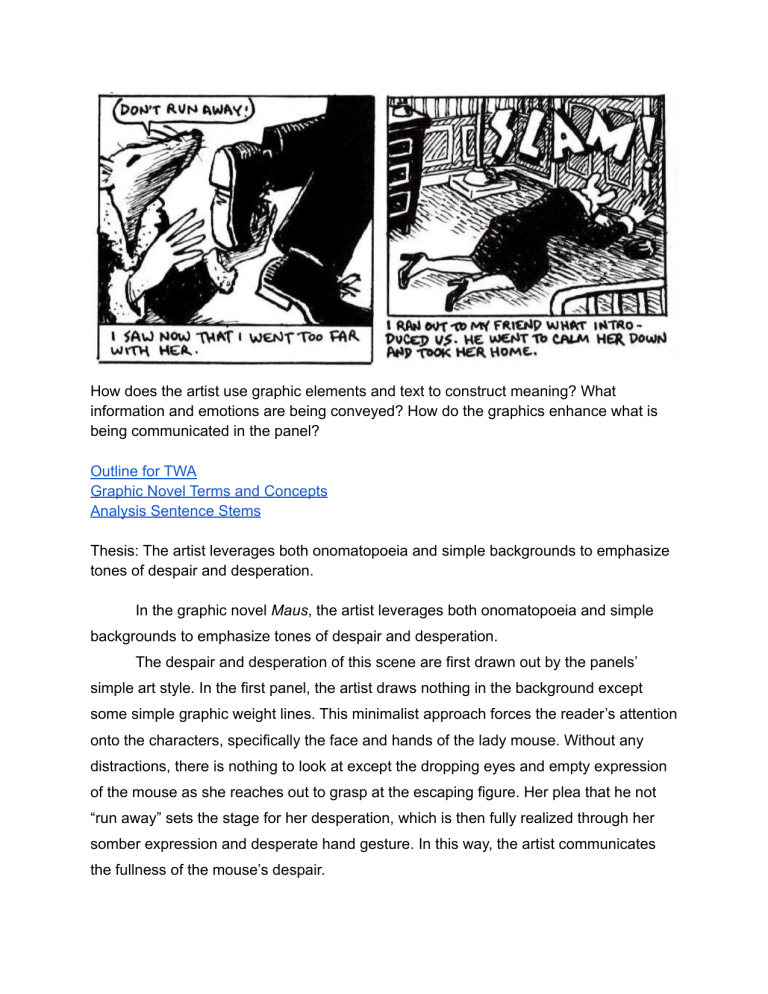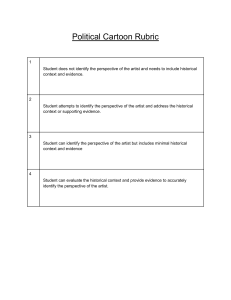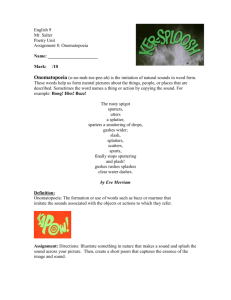
How does the artist use graphic elements and text to construct meaning? What information and emotions are being conveyed? How do the graphics enhance what is being communicated in the panel? Outline for TWA Graphic Novel Terms and Concepts Analysis Sentence Stems Thesis: The artist leverages both onomatopoeia and simple backgrounds to emphasize tones of despair and desperation. In the graphic novel Maus, the artist leverages both onomatopoeia and simple backgrounds to emphasize tones of despair and desperation. The despair and desperation of this scene are first drawn out by the panels’ simple art style. In the first panel, the artist draws nothing in the background except some simple graphic weight lines. This minimalist approach forces the reader’s attention onto the characters, specifically the face and hands of the lady mouse. Without any distractions, there is nothing to look at except the dropping eyes and empty expression of the mouse as she reaches out to grasp at the escaping figure. Her plea that he not “run away” sets the stage for her desperation, which is then fully realized through her somber expression and desperate hand gesture. In this way, the artist communicates the fullness of the mouse’s despair. The second panel adds insult to injury with the use of bold onomatopoeia. As the mouse falls weakly to the floor, the door shuts with a loud “SLAM!” in large, disjointed capital letters. Combined with her frail figure now collapsed on the floor, the use of onomatopoeia indicates that the mouse’s desperation yields no gains, leaving her weak and hopeless on the floor. Instead of the support she clearly needs, all she earns in the second panel is the rejecting sound of a door shutting in her face. This symbolic gesture represents the opportunity the person represented closing, just as the door did. In conclusion, the artist leverages both onomatopoeia and simple backgrounds to emphasize tones of despair and desperation.

